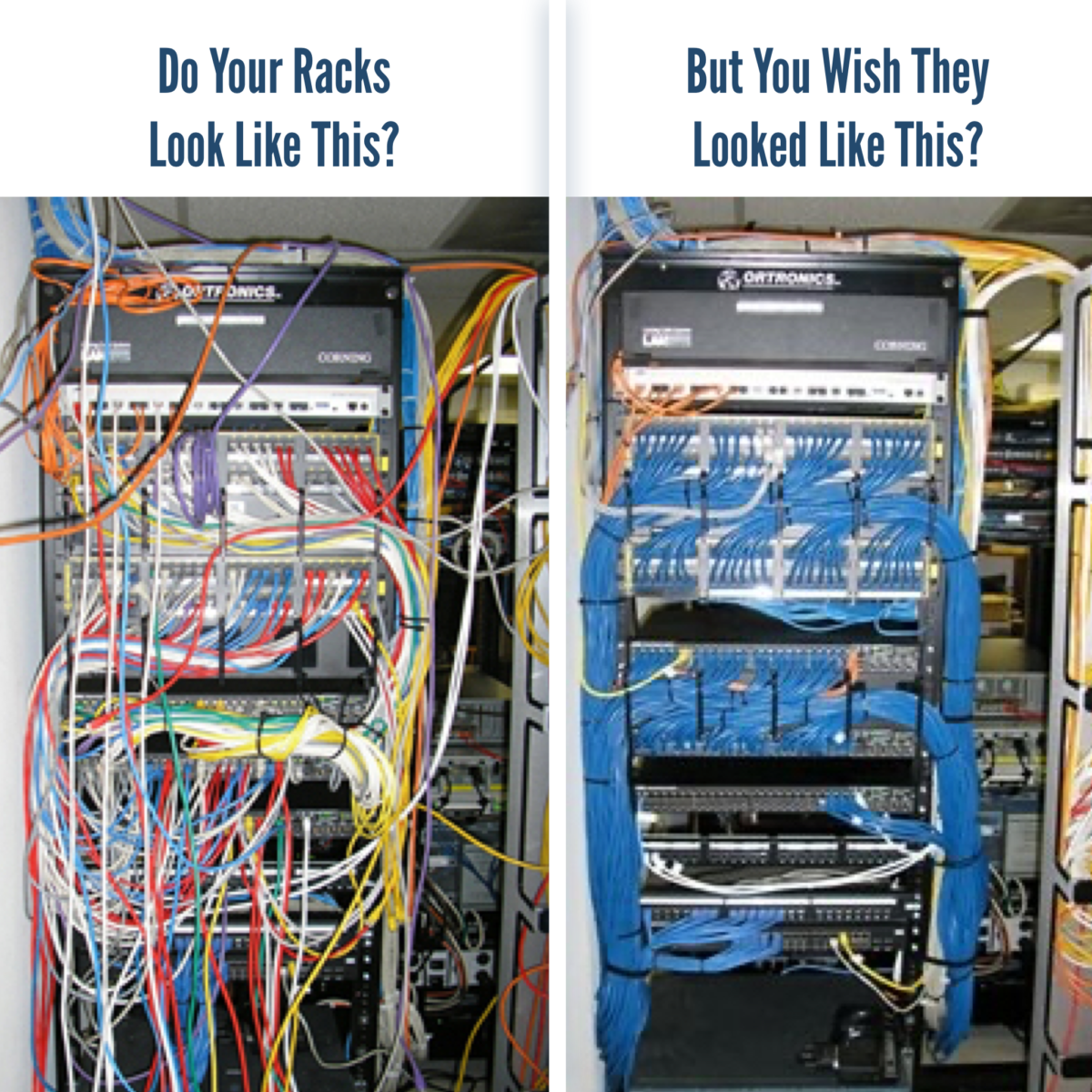Structured cabling is the structure or infrastructure of cabling and associated hardware that provides a telecommunications structure. In laymen’s terms, it consists of the cables and pieces of hardware that make telecommunications work and stay connected. Used frequently in buildings or campus telecommunications, it delivers the flexibility to ensure that additions, changes, or moves are possible while still maximizing system availability and the predictability of performance.
In addition to being more aesthetically pleasing, there is a functionality aspect of structured cabling that makes it ideal. The potential for downtime and human error decreases, the amount of time saved is increased, and overall mobility and added safety measures make the transition to structured cabling imperative.
Is transitioning to structured cabling necessary? Yes! Messy cabling infrastructure creates reduced airflow, which impedes the switch’s ability to operate effectively. Disorganized cabling infrastructure also increases the likelihood of mistakes with channel errors, creates cable tangling, and can create a web of confusion when trying to diagnose hardware issues.
